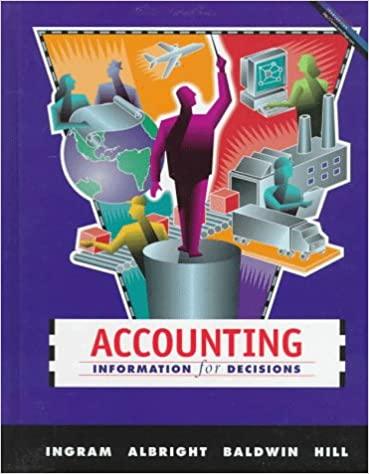
B Suppose that you are the head of the Florida State Emergency Management Agency. After the hurricane Michael, you are trying to determine how to ship supplies from neighbor states to Tallahassee (T), FL in the cost-minimum way possible. In particular, Atlanta (A), GA has 50 trucks of supplies and Birmingham (B), AL has 100 trucks of supplies. While shipping all these supplies from these two cities to Tallahassee (T), Montgomery (M) can be used a transshipment point. The table below shows the available corridors (a corridor is from a city to another city) and the cost of shipping one truck on each corridor. Any number of trucks can travel on each corridor. From Cost of shipping one truck A . $2,000 A T $3,500 B A $1,500 M $3,000 M A $2,000 M T $2,500 a) (4 points) Represent the above problem on a network by: drawing the nodes and explaining what they represent, drawing the arcs and explaining what they represent; explaining node values if any and node types (supply/demand/transshipment or source/sink/transshipment or origin/destination); explaining the arc costs and/or arc capacities if any. After that, state what type of a network optimization problem is the above problem (i.e., are you going to solve a min- cost flow, max-flow, or a shortest-path problem on the network). b) (8 points) Mathematically formulate the corresponding network optimization problem. To do so, clearly define your decision variables, and then formulate the constraints and objective functions using your decision variables. Note: the model should not have any constraint other than flow- balance, arc-capacity, and non-negativity. In addition to shipping supplies, the debris should be removed from two affected cities. Specifically, you want to collect and move as much debris as possible from Tallahassee (T) and Pensacola (P) to cities Atlanta (A) and Birmingham (B). The table below shows the available corridors (a corridor is from a city to another city) and the maximum amount of debris that can be moved on each corridor. From M To B M M P T T Max amount of debris that can be moved on 250,000 tons 200,000 tons 300,000 tons 300,000 tons 150,000 tons A M c) (4 points) Represent the above problem on a network by: drawing the nodes and explaining what they represent, drawing the arcs and explaining what they represent; explaining node values if any and node types (supply/demand/transshipment or source/sink/transshipment or origin/destination); explaining the arc costs and/or arc capacities if any. After that, state what type of a network optimization problem is the above problem (i.e., are you going to solve a min- cost flow, max-flow, or a shortest-path problem on the network). d) (8 points) Mathematically formulate the corresponding network optimization problem. To do so, clearly define your decision variables, and then formulate the constraints and objective functions using your decision variables. Note: the model should not have any constraint other than flow- balance, arc-capacity, and non-negativity. B Suppose that you are the head of the Florida State Emergency Management Agency. After the hurricane Michael, you are trying to determine how to ship supplies from neighbor states to Tallahassee (T), FL in the cost-minimum way possible. In particular, Atlanta (A), GA has 50 trucks of supplies and Birmingham (B), AL has 100 trucks of supplies. While shipping all these supplies from these two cities to Tallahassee (T), Montgomery (M) can be used a transshipment point. The table below shows the available corridors (a corridor is from a city to another city) and the cost of shipping one truck on each corridor. Any number of trucks can travel on each corridor. From Cost of shipping one truck A . $2,000 A T $3,500 B A $1,500 M $3,000 M A $2,000 M T $2,500 a) (4 points) Represent the above problem on a network by: drawing the nodes and explaining what they represent, drawing the arcs and explaining what they represent; explaining node values if any and node types (supply/demand/transshipment or source/sink/transshipment or origin/destination); explaining the arc costs and/or arc capacities if any. After that, state what type of a network optimization problem is the above problem (i.e., are you going to solve a min- cost flow, max-flow, or a shortest-path problem on the network). b) (8 points) Mathematically formulate the corresponding network optimization problem. To do so, clearly define your decision variables, and then formulate the constraints and objective functions using your decision variables. Note: the model should not have any constraint other than flow- balance, arc-capacity, and non-negativity. In addition to shipping supplies, the debris should be removed from two affected cities. Specifically, you want to collect and move as much debris as possible from Tallahassee (T) and Pensacola (P) to cities Atlanta (A) and Birmingham (B). The table below shows the available corridors (a corridor is from a city to another city) and the maximum amount of debris that can be moved on each corridor. From M To B M M P T T Max amount of debris that can be moved on 250,000 tons 200,000 tons 300,000 tons 300,000 tons 150,000 tons A M c) (4 points) Represent the above problem on a network by: drawing the nodes and explaining what they represent, drawing the arcs and explaining what they represent; explaining node values if any and node types (supply/demand/transshipment or source/sink/transshipment or origin/destination); explaining the arc costs and/or arc capacities if any. After that, state what type of a network optimization problem is the above problem (i.e., are you going to solve a min- cost flow, max-flow, or a shortest-path problem on the network). d) (8 points) Mathematically formulate the corresponding network optimization problem. To do so, clearly define your decision variables, and then formulate the constraints and objective functions using your decision variables. Note: the model should not have any constraint other than flow- balance, arc-capacity, and non-negativity







